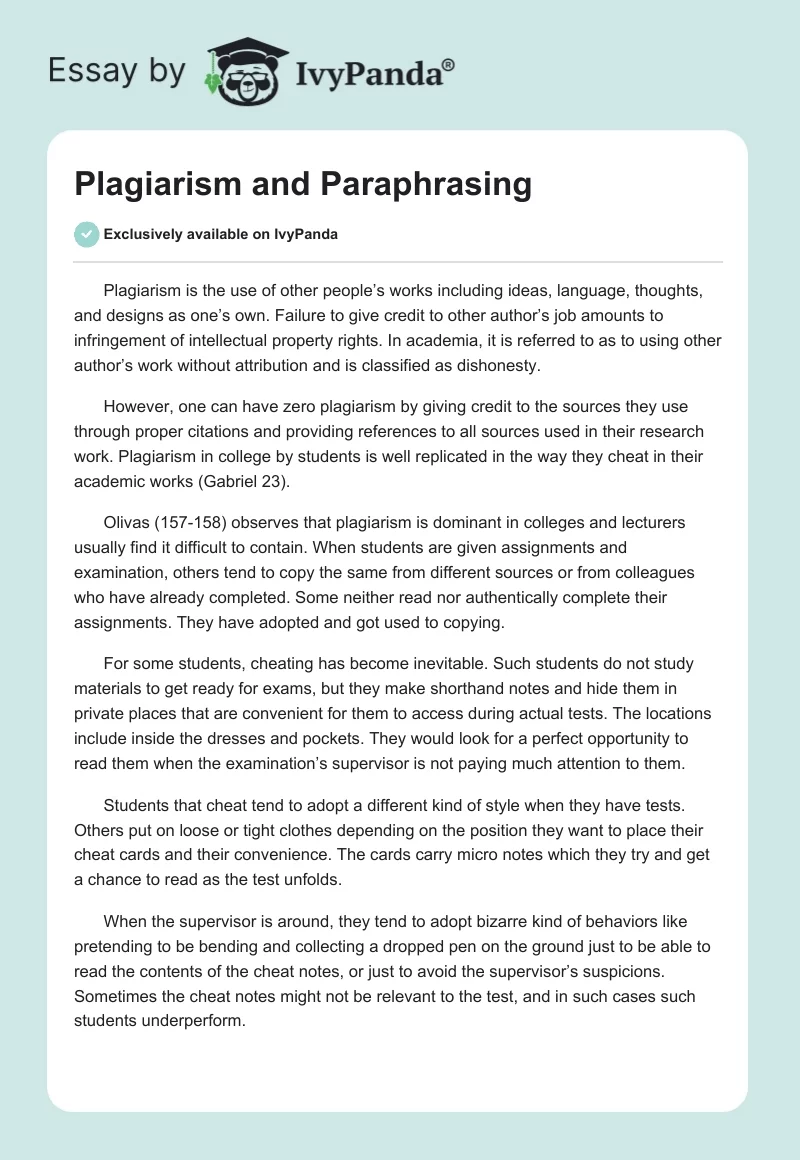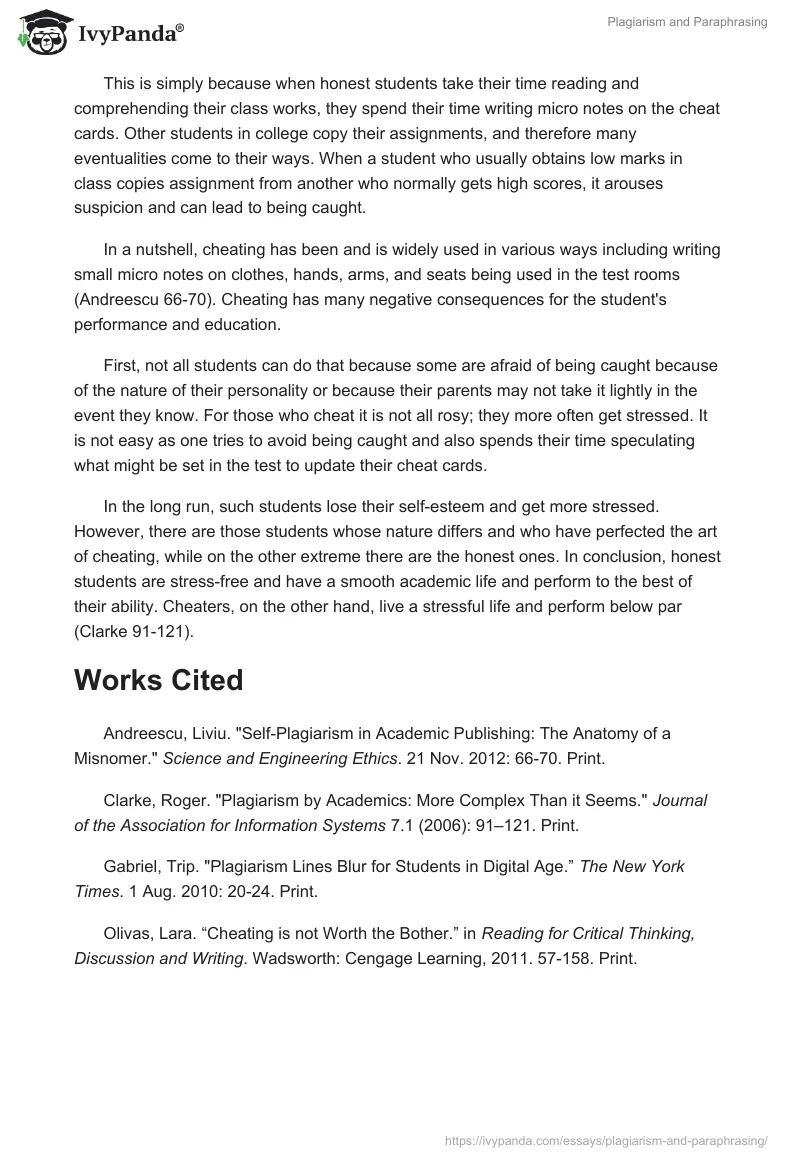Plagiarism is the use of other people’s works including ideas, language, thoughts, and designs as one’s own. Failure to give credit to other author’s job amounts to infringement of intellectual property rights. In academia, it is referred to as to using other author’s work without attribution and is classified as dishonesty.
However, one can have zero plagiarism by giving credit to the sources they use through proper citations and providing references to all sources used in their research work. Plagiarism in college by students is well replicated in the way they cheat in their academic works (Gabriel 23).
Olivas (157-158) observes that plagiarism is dominant in colleges and lecturers usually find it difficult to contain. When students are given assignments and examination, others tend to copy the same from different sources or from colleagues who have already completed. Some neither read nor authentically complete their assignments. They have adopted and got used to copying.
For some students, cheating has become inevitable. Such students do not study materials to get ready for exams, but they make shorthand notes and hide them in private places that are convenient for them to access during actual tests. The locations include inside the dresses and pockets. They would look for a perfect opportunity to read them when the examination’s supervisor is not paying much attention to them.
Students that cheat tend to adopt a different kind of style when they have tests. Others put on loose or tight clothes depending on the position they want to place their cheat cards and their convenience. The cards carry micro notes which they try and get a chance to read as the test unfolds.
When the supervisor is around, they tend to adopt bizarre kind of behaviors like pretending to be bending and collecting a dropped pen on the ground just to be able to read the contents of the cheat notes, or just to avoid the supervisor’s suspicions. Sometimes the cheat notes might not be relevant to the test, and in such cases such students underperform.
This is simply because when honest students take their time reading and comprehending their class works, they spend their time writing micro notes on the cheat cards. Other students in college copy their assignments, and therefore many eventualities come to their ways. When a student who usually obtains low marks in class copies assignment from another who normally gets high scores, it arouses suspicion and can lead to being caught.
In a nutshell, cheating has been and is widely used in various ways including writing small micro notes on clothes, hands, arms, and seats being used in the test rooms (Andreescu 66-70). Cheating has many negative consequences for the student’s performance and education.
First, not all students can do that because some are afraid of being caught because of the nature of their personality or because their parents may not take it lightly in the event they know. For those who cheat it is not all rosy; they more often get stressed. It is not easy as one tries to avoid being caught and also spends their time speculating what might be set in the test to update their cheat cards.
In the long run, such students lose their self-esteem and get more stressed. However, there are those students whose nature differs and who have perfected the art of cheating, while on the other extreme there are the honest ones. In conclusion, honest students are stress-free and have a smooth academic life and perform to the best of their ability. Cheaters, on the other hand, live a stressful life and perform below par (Clarke 91-121).
Works Cited
Andreescu, Liviu. “Self-Plagiarism in Academic Publishing: The Anatomy of a Misnomer.” Science and Engineering Ethics. 21 Nov. 2012: 66-70. Print.
Clarke, Roger. “Plagiarism by Academics: More Complex Than it Seems.” Journal of the Association for Information Systems 7.1 (2006): 91–121. Print.
Gabriel, Trip. “Plagiarism Lines Blur for Students in Digital Age.” The New York Times. 1 Aug. 2010: 20-24. Print.
Olivas, Lara. “Cheating is not Worth the Bother.” in Reading for Critical Thinking, Discussion and Writing. Wadsworth: Cengage Learning, 2011. 57-158. Print.


